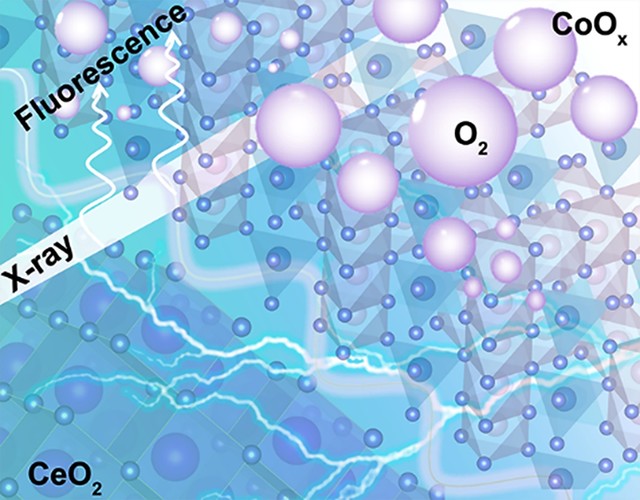Insights into the superior oxygen evolution reaction activity of CoOx/CeO2 composite electrocatalyst
CeO2 significantly enhances the oxygen evolution reaction (OER) activity of CoOx, although the mechanism behind this synergy is still unclear. Here, operando hard X-ray absorption spectroscopy (hXAS) is applied to monitor the Co-K edge and Ce L3 edge in CoOx/CeO2 to shed light on the evolution of Co and Ce oxidation states during OER. In addition, ex situ soft XAS (sXAS) characterizations provide information on the irreversible surface-specific transformations of the Co L3 edge as well as the O K edge.
Water electrolysis powered by renewable electricity is one of the most promising means to achieve sustainable, carbon-neutral long-term energy storage in the form of hydrogen in a multi-energy carrier energy system. Recently, alkaline water splitting has attracted increasing interest, with rapid progress in the development of anion exchange membranes, electrocatalysts and devices. The alkaline environment enables the application of transition metal-based oxides as low-cost OER catalysts. However, the OER performance of most catalysts is limited by slow kinetics. Therefore, the preparation of nanocomposites to exploit the beneficial effects of synergistic interactions is an important strategy to improve the OER activity of these materials. In particular, CeO2 has fast and reversible redox properties, good oxygen conductivity and storage capabilities, and good proton conductivity under some specific conditions. Coupling CeO2 with other transition metal-based electrocatalysts can improve their electrocatalytic performance in various reactions, including OER. However, although it is widely recognized that coupling CeO2 with Co-based materials can improve the OER performance of Co-based catalysts, the mechanism behind this performance improvement is still under debate due to the lack of comprehensive characterizations.
In this study, combining the operando and ex situ spectroscopic characterizations with comprehensive electrochemical analyses, we confirm CeO2 is not the active center for the OER. However, coupling CeO2 with CoOx introduces significant modifications in the Co and O species at the CoOx surface and alters the flat band potential (Efb), leading to more favorable Co oxidation state transformations during OER and possibly modifying the preferential reaction pathway. This work establishes the connections between electronic structures, Co oxidation state and the OER reaction mechanism for CoOx/CeO2 composites electrodes.
